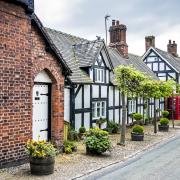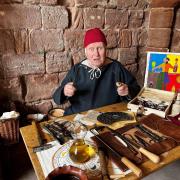There are many different types of fungi in forests, fields, and even parks – they help keep our environment healthy and have some interesting uses in food and medicine.
Fungi do a lot of important tasks in nature. One of their biggest jobs is being nature's recyclers. When plants or animals die, fungi break down their remains into tiny pieces, turning them back into nutrients that plants can use to grow. Without fungi, dead leaves, wood, and other things would just pile up, and the soil wouldn’t be as rich and healthy for plants to grow.
Fungi also help plants grow better. Many fungi form special partnerships with plant roots called mycorrhiza. This is a bit like a teamwork project: the fungi help the plants get water and nutrients from the soil, and in return, the plants give the fungi some of the food they make from sunlight. This teamwork helps trees and other plants grow stronger, especially in forests.

The field mushroom and the tasty chanterelle can be picked and eaten on foraging trips and many more types are useful to humans. Penicillium was used to create penicillin, the first antibiotic. Yeast, which is a type of fungus, helps make bread rise and is used to brew beer and wine. In farming, some fungi are used to protect crops from pests or to help them grow better without using harmful chemicals.
Pollution, cutting down forests, and climate change can harm fungi. Some fungi are protected by law because they are rare or endangered, and others can be poisonous. Make sure you know what you’re picking before you touch or eat any fungi. It’s also a good idea to leave plenty behind so the fungi can keep growing and spreading their spores.

1. Fly agaric
Probably the most famous mushroom with its bright red cap and white spots. It looks like something out of a fairy tale. But be careful—this one is poisonous, so don’t touch or eat it.
2. Chicken of the woods
This fungus grows on trees and looks like a big, bright yellow-orange shelf. It’s called chicken of the woods because its texture is a bit like chicken meat, and is edible.
3. Common puffball
The common puffball is small and round, and when it’s ready, it puffs out a cloud of spores if you tap it. It’s fun to see, and can be eaten when young and fresh.

This tall fungus has a shaggy cap that turns into a black, inky liquid as it gets older. It’s often found in grassy areas and is edible when it’s young – before it starts to melt.
5. Birch polypore
This fungus grows on birch trees and looks like a thick, leathery disc. It’s not something you’d eat, but has been used for sharpening knives or even as a natural bandage.
6. Chanterelle
The chanterelle is a bright yellow fungus that smells fruity. It’s found in forests and is a favourite for foragers because it tastes great.
To find out more, Cheshire Wildlife Trust has a pocket guide available at cheshirewildlifetrust.org.uk/shop



























